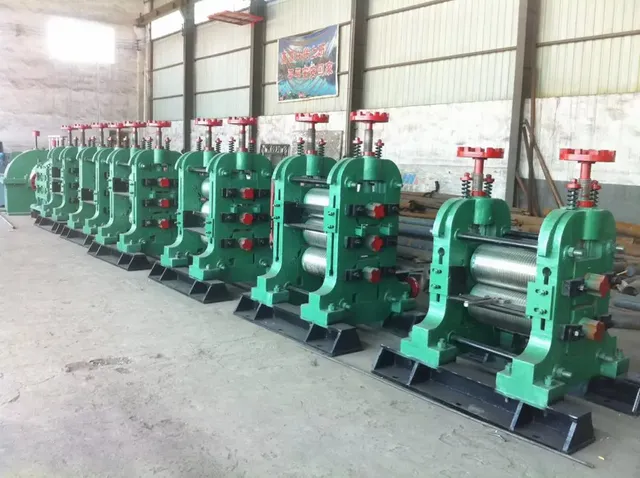How our steel is produced: The section rolling mill
Section rolling mill is an important equipment used in the steel industry to manufacture various steel sections. The following is a detailed introduction to section rolling mill:
Definition and function
Section rolling mill is mainly used to process steel billets or ingots into steel products with specific cross-sectional shapes through a series of rolling processes. These products include I-beams, channels, angles, H-beams, etc., which are widely used in many fields such as construction, bridges, and machinery manufacturing.
Working principle
During the section rolling process, the billet or ingot is first heated to a suitable temperature in a heating furnace, and then initially rolled through a rough rolling unit to form a rough cross-sectional shape. Then, it enters the finishing mill for further rolling until the final product size and shape requirements are met. During the rolling process, parameters such as the roll reduction, rolling speed, and temperature need to be strictly controlled to ensure the quality and performance of the product.
Main features
High flexibility: Section rolling mills can produce steel products with different cross-sectional shapes and specifications according to market demand, and have strong adaptability.
High production efficiency: The continuous rolling process is adopted to achieve high-speed and efficient production, significantly improving production efficiency and output.
Excellent product quality: By accurately controlling the rolling parameters and adopting advanced rolling technology, the products are ensured to have good dimensional accuracy, surface quality and mechanical properties.
High degree of automation: Modern steel rolling mills generally use computer control systems for automated production, which can realize remote monitoring and fault diagnosis, and improve the stability and safety of production.
IV. Types and applications
Steel rolling mills can be divided into many types according to factors such as rolling methods, number of rolls and types of rolled products, such as two-roll mills, four-roll mills and universal mills. Different types of rolling mills are suitable for producing steel products of different types and specifications. For example, universal mills are widely used in the production of H-beams because they can roll steel products with complex cross-sectional shapes.
In the steel industry, steel rolling mills are one of the indispensable key equipment. With the advancement of science and technology and changes in market demand, steel rolling mills will continue to develop in the direction of large-scale, automation and intelligence, making greater contributions to the progress of the steel industry.
A section mill is a rolling mill used primarily to produce long products with a variety of cross-sectional shapes. These products include structural steel beams, angles, channels, and rails, among others. Here is a basic overview of its working principle and components:
Components of a section mill:
Heating furnace:
The raw material billet is heated in the heating furnace to a high temperature (usually between 1100-1250°C or 2000-2300°F) to make it plastic for easy forming.
Rolling stand:
This is the key component where the actual rolling process takes place and consists of a set of rolls arranged in a specific configuration:
General purpose rolling stand: Used to roll profiles of various cross-sections.
H-beam rolling stand: Specially designed to produce H-beams.
Beam rolling stand: Used to produce I-beams and similar profiles.
Rollers:
Working rolls: Rollers that come in direct contact with the billet.
Support Rolls: Larger rolls that support the working rolls and help maintain their position and pressure.
Guide Rollers:
These rolls guide the billet into the rolling stands and ensure proper alignment during rolling.
Cooling Bed:
After rolling is completed, the hot rolled profile is cooled on a cooling bed or conveyor belt. This process can be done with air cooling or water spray, depending on the desired characteristics of the final product.
Straighteners:
These machines are used to correct the warping or bending that occurred during the rolling process.
Cutters:
After rolling and cooling, the profile is cut to the specified length using a cutter or saw.
Process Overview:
Heating: The billet is heated in a heating furnace so that it is suitable for rolling.
Rolling: The heated billet is fed into the rolling mill and passes through different stands and rolls to achieve the desired shape and size.
Cooling: The rolled profile is cooled on a cooling bed.
Finishing: The profiles are straightened and cut to the required lengths.
Application Areas:
Construction: For the production of structural steel profiles such as beams, columns and channels used in buildings and infrastructure.
Railway: Production of railway tracks and related components.
Manufacturing: Where long steel profiles are required in various industrial applications.
If you have any specific questions about the operation or components of a profile mill, feel free to ask!
